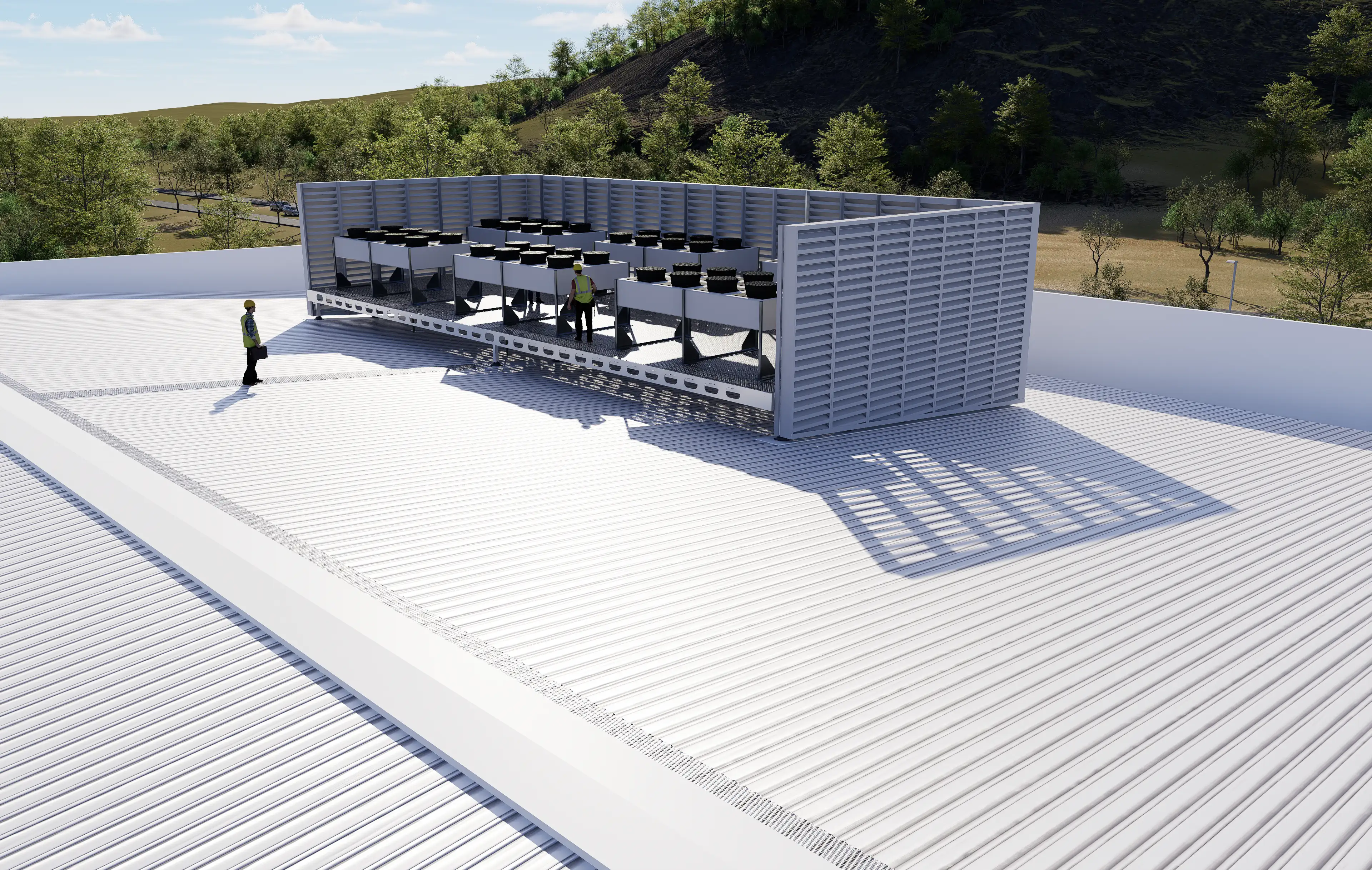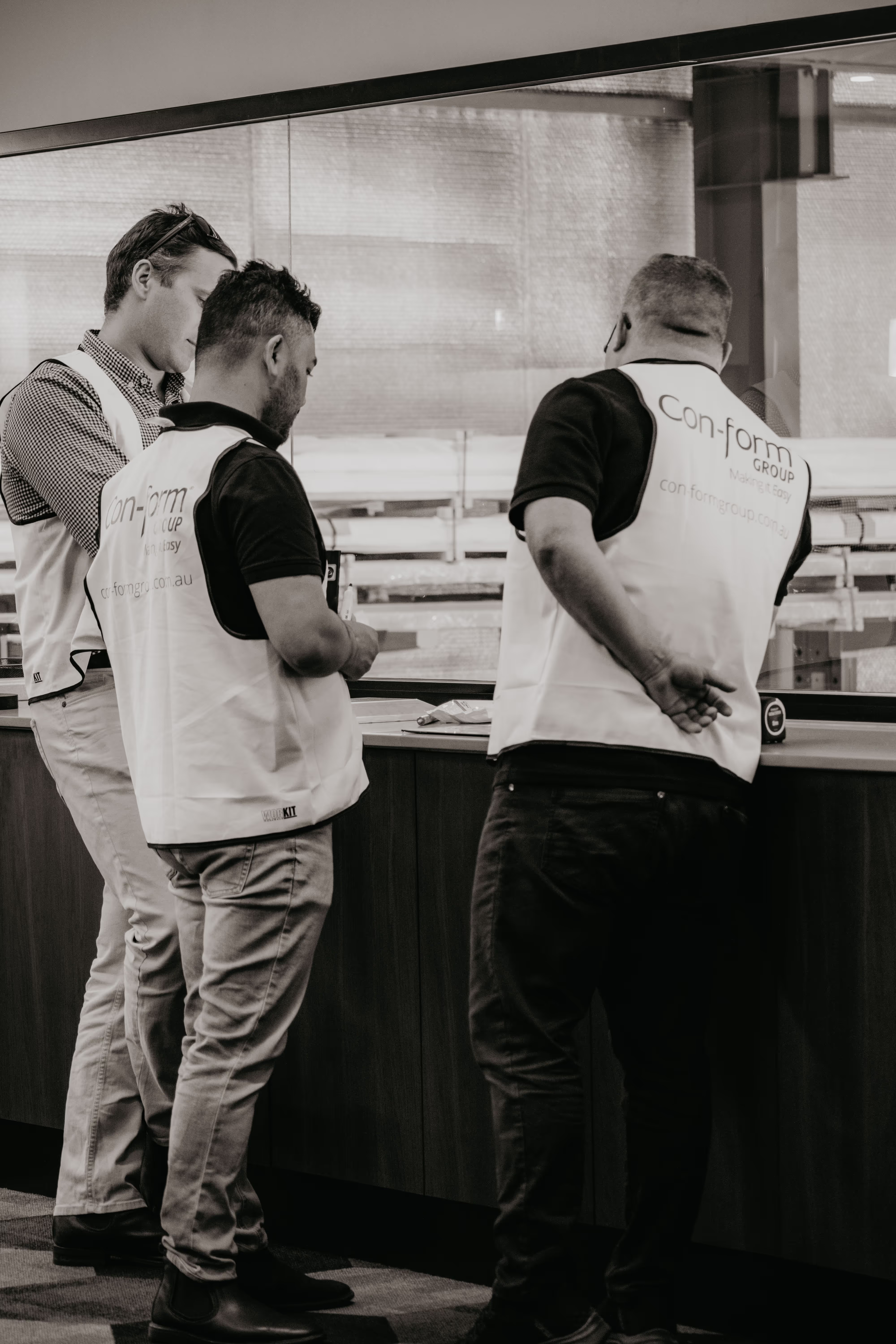Structural Steel vs Light Gauge Steel Platforms


This technical paper provides structural engineers with a methodology to assess and validate the conversion of traditional structural steel HVAC platforms to light gauge steel (LGS) systems. With an 83% reduction in platform dead load, LGS systems enable previously unfeasible retrofit projects and provide significant capacity reserves for new construction.
Increasing rooftop mechanical equipment densities, particularly in data centres and commercial buildings, often exceed existing structural capacity when using traditional structural steel platforms. Light gauge steel platforms offer a paradigm shift by dramatically reducing imposed loads while maintaining required performance standards to AS/NZS 1170 series.
Platform TypeWeight (kg/m²)10m × 10m PlatformStructural Steel85-1208,500-12,000 kgEasyMech MR (LGS)12-141,200-1,400 kgSpan+ (LGS)15-181,500-1,800 kg
For 20 tonnes of HVAC equipment on a 100m² platform:
Structural Steel:
LGS Platform:
Step 1: Document Review
Step 2: Capacity Calculations
For existing rafter capacity:
Available capacity = φMb - Mexisting
Utilisation = (Mexisting + Mnew) / φMb
Acceptable if < 0.95
Step 3: Load Distribution Analysis
Load AspectStructural SteelLGS PlatformSupport Points4-8 concentrated20-50 distributedPeak IntensityP/4 to P/8P/20 to P/50Load PathPoint loads → ColumnDistributed → Purlin/Rafter
Structural steel platforms typically require reinforcement when:
Typical reinforcement costs:
Example: 2,000m² warehouse retrofit
Structural Steel: 28.5 kg/m² new load = Reinforcement requiredLGS Platform: 23.4 kg/m² new load = Within capacity
Parameters:
Structural Steel Option:
Platform weight = 28,500 kg
Total new load = 6.17 kPa
Available = 1.2 kPa
RESULT: Major reinforcement required ($350,000)
LGS Option:
Platform weight = 3,900 kg
Effective new load = 4.41 kPa (with distribution factor)
Total = 7.21 kPa < 8.0 kPa capacity
RESULT: Acceptable with minor upgrades ($45,000)
Seismic force reduction = 8,600 kg × Cs per platform
For Cs = 0.15: Force reduction = 12.9 kN
AspectStructural SteelLGS PlatformInstallation time5-10 days1-2 daysCrane size50-tonne20-tonneHot worksRequiredNoneRevenue loss (DC)$250K-2M$50-400K
FactorWeightStructural SteelLGS PlatformStructural Impact30%2/109/10Initial Cost25%3/108/10Installation Time20%3/109/10Future Flexibility15%4/108/10Maintenance10%5/109/10Weighted Score3.2/108.6/10
Challenge: Add 20 chillers to facility at 95% structural capacity
Traditional approach: New building ($15M) or major upgrade ($3.5M)
LGS Solution:
"HVAC platforms shall be lightweight steel construction utilizing G550 cold-formed sections. Maximum dead load 15 kg/m². Design for minimum 2.5 kPa live load to AS/NZS 1170. No hot works required for installation."
Converting to light gauge steel platforms provides quantified benefits:
Load Reduction: 83% platform weight, 15-30% total roof loadCost Savings: 40-60% total project costTime Savings: 70-90% installation timeFuture-proofing: Modular reconfiguration without structural modification
The assessment methodology ensures conversions are technically sound and economically optimal. For capacity-constrained projects, LGS platforms transform unfeasible projects into straightforward implementations.
Critical takeaway: The 83% weight reduction often eliminates the need for structural reinforcement, saving hundreds of thousands in upgrade costs while achieving faster installation and improved long-term flexibility.
Technical Support: Con-form Group Engineering provides complimentary structural assessments. Contact: engineering@con-formgroup.com.au | 1300 882 490

